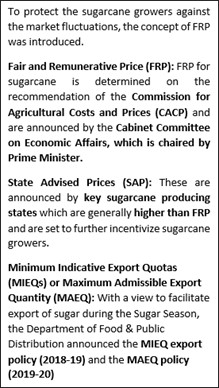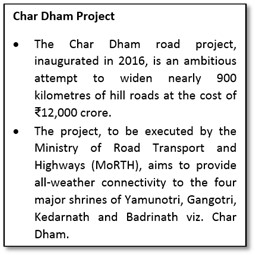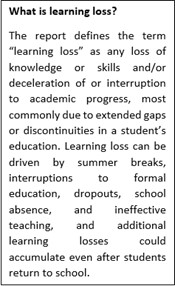Friday, 17th December 2021
Electoral Reforms Bill
In News
The Union Cabinet cleared the draft Bill to amend the Representation of the People Act (RoPA),1951 and the Aadhaar Act, 2016 seeking to bring in key electoral reforms.
What are the key reforms approved by the Cabinet?
- Linking of voter ID with Aadhaar of new and existing voters albeit only on a voluntary basis. Aadhaar number will only be used for the purpose of voter authentication.
- Allowing multiple cut-off dates – January 1, April 1, July 1 and October 1- in a year for those above 18 years to register themselves as voters. Currently, only an individual who has attained the age of 18 as on January 1 of that year or before is eligible to be enrolled in the voters’ list.
- Provision to make the registration of service voters, gender-neutral to replace the term ‘wife’ with ‘spouse’ in the provision in the Representation of the People Act related to service voters, where an Army person’s wife is entitled to be enrolled as a service voter.
- To empower the EC to requisition premises for any purpose related to election and not just for creating polling stations and storage of ballot boxes and also allowing the Election Commission to take over any premise for the conduct of elections overruling objections to taking over schools as polling booths
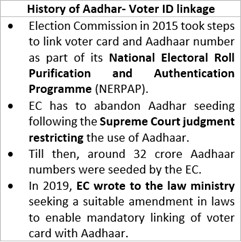
Why the reforms are important?
- Aadhaar-EPIC linkage will help to secure, possibly electronic, voting to help migrant voters — including domestic workers, migrant labourers etc — exercise their franchise even if they are not in the constituency where they are registered as voters.
- Also, it will curb multiple enrolments of the same individual at different places.
- Once their identification be adequately verified, the commission can explore technology that will let them vote from a remote location guarded by the EC.
Possible Challenges with the reforms
- Sensitive information contained within Aadhaar database may affect the anonymity required in the election process. There is also a possibility of breach of privacy of the individual due to the Aadhaar linking.
- Multiple cut-off dates will increase the efforts of the ECI in creating electoral rolls. The problem is further compounded by the limited capacity of administrative agencies.
- Due to the ongoing pandemic, requisitioning of schools for electoral processes will pose an added responsibility of disinfecting the schools post elections.
- According to law, government has to pay rent as per the market rate whenever they use private school property for electoral purposes. This may put added strain on the resources of the ECI.
Way forward
The idea behind the reforms to fill the administrative and procedural gaps is well intentioned. But at the same time, efforts should be made to implement these reforms holistically and in spirit as much as in letter.
Sources:
Independence of Election Commission of India
In News
The Chief Election Commissioner expressed reservations over the wording of a letter from an official of the Law Ministry.
About the News
The Law Ministry recently sent a letter to the Election Commission saying that the Principal Secretary to PM will “chair a meeting” on a common electoral roll and “expects CEC” to be present.
Why the CEC expressed concern?
- According to the Order of Precedence in India, the CEC is placed higher than Cabinet Secretaries. This ceremonial rank makes it inappropriate, if the latter summons the former.
- Election Commission of India (ECI) is an independent body, hence the meetings or discussions called by officers of the government may harm its image of independence in the public eye.
- According to protocol, government officers call on the ECs, not the other way round.
- The Election Commission is a Constitutional authority whose functioning is insulated from the Executive and hence they maintain a distance from the government.
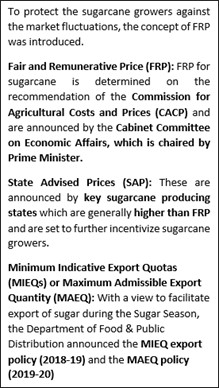
Independence of the EC
- The ECI was envisioned as an independent body to act for the avowed purpose of pursuing the objective of free and fair elections.
- The independence of the office of CEC is assured by article 324 of the constitution:
- Subject to the provisions of any law made by Parliament, the conditions of service and tenure of office of the Election Commissioners and the Regional Commissioners shall be such as the President may by rule determine,
- provided that the Chief Election Commissioner shall not be removed from his office except in like manner and on the like grounds as a Judge of the Supreme Court and the conditions of service of the Chief Election Commissioner shall not be varied to his disadvantage after his appointment,
- Provided further that, any other Election Commissioner or a Regional Commissioner shall not be removed from office except on the recommendation of the Chief Election Commissioner.
How is independence of EC compromised?
- Appointment of EC: At present, the CEC and Election Commissioners are appointed by the President on the advice of the Cabinet which provides advise under Transaction of Business Rules, 1961 of the Union cabinet. This is in complete contrast to the procedure for several other appointments like the director of CBI who is appointed by a high-powered committee consisting of the prime minister, the Chief Justice of India or his nominee, and the leader of the Opposition.
- Majority view to be upheld: With the passing of the ‘The Election Commission Act, 1991,’ all three Commissioners were given equal decision-making powers with the majority view prevailing. Further, the Constitution has not debarred the retiring election commissioners from any further appointment by the government. ECs, thus, become politically vulnerable which, in turn, affects the functioning of the Election Commission.
- Removal of ECs: The ECs, other than CEC, can be removed on the recommendation of the CEC alone. This makes the post of ECs vulnerable to bias.
Way Forward
- It is essential for a robust democracy that institutional protection is accorded to the EC and it is empowered to take adequate actions against poll code violators.
- This would ensure that public faith in the EC is strengthened.
- This bolsters the case for the removal of any political bias in the appointment of the CEC and ECs and the same should be channelled in a manner ensuring adequate participation of all the relevant stakeholders.
Sources:
- CEC, ECs interacted with PMO after Government note sought presence of poll panel chief: https://indianexpress.com/article/express-exclusive/cec-sushil-chandra-election-commissioners-pmo-meet-law-commission-7676778/
- CEC, ECs interaction with PMO: Why this raises questions and breaches a red line
- How Can We Constitute a More Impartial, Non-Partisan Election Commission?
- An Expert Explains: How EC evolved, what rules it follows in case of disagreement
Pradhan Mantri Krishi Sinchayee Yojana (PMKSY)
In News
The government has extended the Pradhan Mantri Krishi Sinchayee Yojana (PMKSY), launched in 2015 to improve farm productivity by four years till 2025-26 to complete ongoing projects.
About the news
- The government also approved the Accelerated Irrigation Benefit Programme (AIBP), Har Khet ko Pani (HKKP), and watershed development components of the PMKSY for four years to 2025-26.
- Under the AIBP, which offers financial support to irrigation projects, the government aims to extend irrigation to 1.39 million hectares by 2025-26.
- Apart from completing 60 ongoing projects, including the 3- million-hectare command area development, additional projects can also be taken up as part of the programme.
- The inclusion criteria have been eased for projects under tribal and drought-prone areas.
- Central funding of 90% of water component for two national projects, namely Renukaji Dam Project (Himachal Pradesh) and Lakhwar Multipurpose Project (Uttarakhand), has been provisioned.
Understanding PMKSY
- What is it? PMKSY is a Centrally Sponsored Scheme launched in 2015 that focuses on enhancing water use efficiency at farm level through Micro Irrigation (MI).

- Objectives: The broad objectives of PMKSY include:
- Achieve convergence of investments in irrigation at the field level
- Enhance the physical access of water on the farm and expand cultivable area under assured irrigation (Har Khet ko pani).
- Integration of water source, distribution and its efficient use, to make best use of water through appropriate technologies and practices.
- Enhance the adoption of precision - irrigation and other water saving technologies (More crop per drop).
- Enhance recharge of aquifers and introduce sustainable water conservation practices etc.
- Components of the Scheme: PMKSY consists of four major components implemented by various ministries that include:
- Accelerated Irrigation Benefits Programme (AIBP) under Department of Water Resources, River Development and Ganga Rejuvenation, Ministry of Jal Shakti.
- Har Khet Ko Pani (HKKP) under (Department of Water Resources, River Development and Ganga Rejuvenation, Ministry of Jal Shakti) that include sub-components like:
- Command Area Development (CAD),
- Surface Minor Irrigation (SMI),
- Repair, Renovation and Restoration (RRR) of Water Bodies and
- Ground Water Development.
- Watershed Development under Department of Land Resources, Ministry of Rural Development and
- Per Drop More Crop under Department of Agriculture and Farmers Welfare, Ministry of Agriculture & Farmers Welfare.
- Funding of the Scheme: Funds under the scheme is shared between Central Government and State Government in the ratio of 60:40 for all States except the Northeastern and Himalayan states where it is 90:10 and in case of UTs, funding pattern is 100% grant by the Central Government.
Source:
Image Source:
First Human Flight
On December 17th, 1903 near Kitty Hawk, North Carolina, brothers Orville and Wilbur Wright made the first successful sustained flights in an airplane—Orville first, gliding 120 feet (36.6 metres) through the air in 12 seconds. The claim of the Wright brothers to have flown was widely doubted during the years 1906–07. Brothers Orville and Wilbur Wright did not invent flight, but their craftsmanship skills helped them form the early 20th-century equivalent of a startup. Their invention of the Flyer, which was the first crewed, powered, heavier-than-air and (to some degree) controlled-flight aircraft, brought people and ideas together like never before.

Source:
Urban co-operative banks
In News
Recently, the Prime Minister and RBI governor flagged the need for stricter regulation for Urban Cooperative Banks (UCBs)
About the News
- In recent times, cooperative banks, more particularly UCBs, have been in the limelight ever since the Punjab and Maharashtra Co-operative (PMC) Bank and Sri Guru Raghavendra Sahakara Bank imbroglios happened.
- As on March 31, 2020, 94 per cent of the entities in the banking sector were UCBs. However, their share in banking sector’s deposits and advances was 3.24 per cent and 2.69 per cent respectively.
- UCBs have highest NNPA (%) and GNPA (%) across the banking sector
- The trend of deterioration in financial performance is also visible from the earning parameters of the UCBs, i.e., Return on Assets, Return on Equity, and Net Interest Margin.
What are Urban Co-operative Banks?
- Co-operative banks, which are distinct from commercial banks, were born out of the concept of co-operative credit societies where members from a community band together to extend loans to each other, at favourable terms.
- The primary (urban) co-operative banks (UCBs) are registered under the respective State Co-operative Societies Act or Multi State Cooperative Societies Act, 2002 and governed by the provisions of the respective acts.
- Difference between UCBs and Commercial banks: Unlike commercial banks, UCBs are only partly regulated by the RBI. While their banking operations are regulated by the RBI, their management and resolution is regulated by the Registrar of Co-operative Societies.
- Unlike commercial banks which are structured as joint stock companies, UCBs are structured as co-operatives, with their members carrying unlimited liability.
- While there is a clear distinction between a commercial bank’s shareholders and its borrowers, in a UCB borrowers can double up as shareholders.
- In the event UCBs fail, deposits with them are covered by the Deposit Insurance and Credit Guarantee Corporation of India up to a sum of ₹5 lakh per depositor, the same as for a commercial bank.
Role of UCB Sector in the Indian Banking System and its Performance
- Financial inclusion: On account of their local feel and familiarity, UCBs are important for achieving greater financial inclusion.
- Helps Small businesses: UCBs remain quite a hit with retail savers and small businesses because they offer attractive interest rates on deposits, far higher than commercial banks.
- Community Level Banking: Urban cooperative banks represent community-based banking and render useful banking services to the local communities.
- Promoting Self-help: UCBs are organised with the objective of promoting thrift and self-help among the middle class/lower middle class population and providing credit facilities to the people with small means in the urban/semi-urban centres.
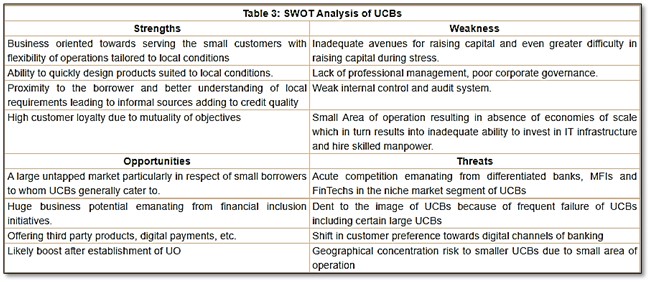
What are the Constraints leading to Sub-par performance of the UCBs?
- Structural Constraints: Certain core principles like voluntary and open membership, democratic control by members through the concept of, one-person-one-vote, etc. become constraints for the co-operative societies in financial matters like Banking.
- Constraints in Raising Capital: Limited ability to raise capital restricts the capacity to reinforce resilience and expand business of UCBs.
- Democratic Member Control: In pursuance of the democratic principles, the members of the Board are necessarily elected from amongst the members of the bank. This often translates into insufficient skill sets, lack of required expertise and desired qualifications.
- Duality of Regulation: The UCBs are registered as co-operative societies under the Co-operative Societies laws of Centre or States. No strict demarcation of regulation roles between the RBI and concerned co-operative societies creates dual control and overlaps.
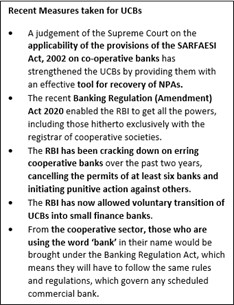
- Other Constraints:
- Heterogeneity: The UCB sector has a significantly high degree of heterogeneity among banks in terms of size, area of operation and geographical distribution. Further, UCBs are registered under different statutes of the states/centre based on their area of operation.
- Level of Technology Adoption: The present level of technology adoption in UCBs is low and does not reflect the fast-changing banking technology landscape. Resultantly, the UCB sector could be losing its competitive edge to commercial banks, small finance banks, payments banks and MFIs.
- Quality of Human Resources: Recruitment of staff through a non-standardized process, lack of training and failure to attract desired talent because of far flung locations, low salary structures and not-so-good career prospects lead to low quality in Human Resources.
- Family control of UCBs: There is a perception that most UCBs are family-managed, leading to financial irregularities, serious conflict of interest issues and related party transactions that can threaten the entire viability of the banks.
- Policy Related Constraints: The foremost concerns expressed by the stakeholders were the lower group exposure limits, lower exposure limits for housing loans, ceilings on total unsecured loans as well as individual unsecured loan and restrictions on bullet repayment on gold loans. UCBs are generally excluded from interest subsidy/subvention schemes of Government of India.
Way Forward
- Every cooperative bank must identify its core competency and focus primarily on building a strong retail business franchise. This can be done only by adopting the best underwriting practices, backed by emerging technologies, and servicing customers on a real-time basis.
- AS UCBs can play a larger role to formalise credit for a large population and small businesses, the focus should be on building a sustainable model with strong risk management and governance framework.
- There is a need for financial literacy so that depositors are not easily lured by the promise of higher interest, are aware of the risks and are able to judge the financial soundness of the banks in which they choose to deposit their money.
- Recommendations of the NS Vishwanathan Committee: The Committee has suggested many reforms like Expediting Umbrella Organisation, Enabling larger UCBs to raise capital, Categorisation of UCBs, process for Resolution of UCBs and Continuation of TAFCUB. (For Details of the recommendations, please refer to snapshot through this link: https://edukemy.com/current-affairs/gazette/2021-08-24/regulation-of-urban-co-operative-banks-ucbs)
Question: Discuss the recent trends in performance of UCBs and reasons behind such performance.
Sources:
- FUNCTIONAL
- Technology, talent and governance issues top challenges for urban cooperative banks, say experts
- ‘Urban co-operative banks face dual challenges’
- It’s defining times for Urban Cooperative Banks
- How Modi govt’s ordinance on cooperative banks can prevent PMC-like scams, protect depositors
- System failure
- View: It's time to reform India's cooperative banks
- Is the demise of Urban Cooperative Banks around the corner?
- Developments in Co-operative Banking
Rare wispy ice formations
This is image of rare wispy ice formations streak across the sea near Antarctica. Strong winds and unusual ocean currents helped paint a icescape on the surface of the ocean near Antarctica, and the rare phenomenon was recently captured in a satellite image. The sea ice is made up of both multiyear ice (white) that sticks around year after year and first-year ice (gray) that is fresh. This sea ice is normally a lot closer to the Ice Shelf, but in the image, strong winds have pushed it much farther away. This wider gap has allowed the wispy streaks of ice to form between the two larger chunks of ice. The icy tendrils are made out of nilas, thin sea ice less than 4 inches (10 centimeters) thick. Nilas is made out of frazil ice — tiny, needle-like crystals that are the first stage of sea ice growth — and it normally forms complete fragile sheets that sit on top of the water. However, the strong winds create strange surface currents that prevent the nilas ice from forming into a single sheet and instead push it across the channel's surface.

Source:
Green Hydrogen Microgrid Project
- Context: India's first and one of World’s largest Green Hydrogen Microgrid Project is said to be set up in Andhra Pradesh.
- The project, designed by NTPC, will be set up at Simhadri near Visakhapatnam and it would be a precursor to large scale hydrogen energy storage projects.
- Green hydrogen is produced by splitting water into hydrogen and oxygen using an electrolyzer powered by renewable energy sources such as wind and solar.
- It can be a game-changer for India’s energy security as India imports 85% of its oil and 53% of gas requirements.
- Thus, India considers making it mandatory for fertilizer plants and oil refineries to purchase green hydrogen which will boost our target of becoming carbon neutral by 2070.
- The project would open doors for decarbonising the far-off regions of the country like Ladakh, J&K etc which are dependent on diesel generators.
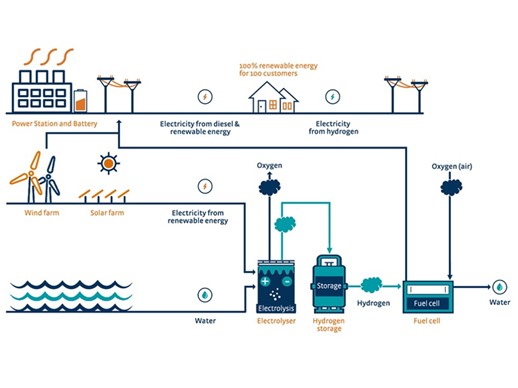
Source:
- NTPC gives first green hydrogen microgrid project to Simhadri plant
- India’s first; and one of world’s largest Green Hydrogen Microgrid Projects to be set up at Simhadri
- India's first Green Hydrogen Microgrid Projects to be set up in Andhra
Image Source:
Xenobot
- Context: Recently, scientists have stated that xenobots can reproduce.
- Xenobots are living robots formed from the stem cells of the African clawed frog (Xenopus laevis).
- They are made from scraped living stem cells from frog embryos. Therefore, they are robots but also clearly organisms made from genetically unmodified frog cell.
- They are less than a millimeter (0.04 inches) wide and were first unveiled in 2020 after it was found that they could move, work together in groups and self-heal.
- They have an entirely new form of biological reproduction different from any animal or plant known to science.
- They are combination of molecular biology and artificial intelligence and are biodegradable.
- They use “kinetic replication"(a process that is known to occur at the molecular level) to replicate that has never been observed before at the scale of whole cells or organisms.

Source:
- The possibilities as the first 'living robots' reproduce
- World's first living robots can now reproduce, scientists say
Image Source:
Bhu Parikshak
- Context: A team of researchers at the Indian Institute of Technology, Kanpur has created an app- Bhu Parikshak.
- It is a portable, app-linked soil testing device that provides easy, affordable soil testing and fertilizer utility analysis for farmers.
- The device has a 5cm cylinder, where 5 grams of dry soil needs to be put for the device to analyse the soil composition.
- Once this sample is added to the device, it can analyse the presence of six elements in the soil namely nitrogen, phosphorus, potassium, organic carbon, clay and the soil’s cation exchange capacity.
- Based on the readings, the device will also recommend the composition of fertilisers to be used in a stretch of soil based on the crops being grown.
- The device requires 90 seconds to provide the analysed data. Over time, each unit can be used to test up to 1 lakh soil samples thus offering a fairly lengthy life span.
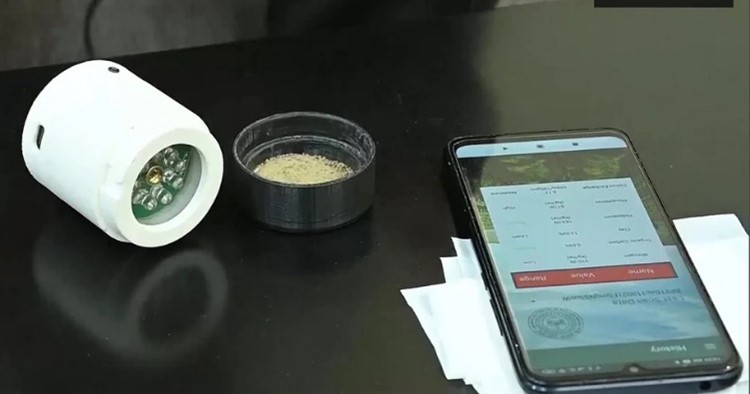
Source:
- IIT researchers create Bhu Parikshak, an app-linked affordable soil tester for farmers
- IIT-K develops first of its kind soil testing device
Image Source:
Swadhar Greh
- Context: The Ministry of Women and Child Development has recently implemented Swadhar Greh scheme.
- It is a scheme which targets the women victims of difficult circumstances who are in need of institutional support for rehabilitation so that they could lead their life with dignity.
- The Scheme envisages providing shelter, food, clothing, health as well as economic and social security for these women.
- Under the Scheme, Swadhar Greh will be set up in every district with capacity of 30 women with the following objectives:
- To cater to the primary need of distressed women.
- To enable them to regain their emotional strength that gets hampered due to their encounter with unfortunate circumstances.
- To provide them with legal aid and guidance to enable them to take steps for their readjustment in family/society.
- To rehabilitate them economically and emotionally.
- To enable them to start their life afresh with dignity and conviction.
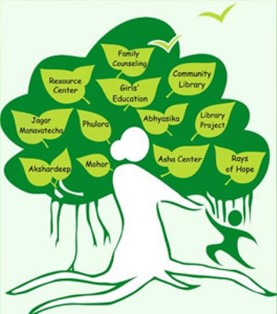
Source:
Image Source:
The WTO’s challenge to MSP is another frontier to cross: TH
Essence: The article talks about the debate regarding Minimum Support Price (MSP) which is considered to violative of Agreement on Agriculture (AOA) of the World Trade Organization. The AOA allows the subsidies in the form of income support and direct payment under production but disallows the price support in the form procurement of crops at MSP. However, India can use peace clause which forbids bringing legal challenge against price-based support. But this is applicable only for some programs with certain conditions and do not provide a long-term solution.
So India should start looking for alternatives one of which could be moving from price-based support to income-based support. Another option could be providing the price-based support within the prescribed limit along with an income-based support policy. The government should try creating affable environment for the farmers so that they can win their trust with respect to any policy intervention done by them.
Why you should read this article?
- To understand how legal guarantee for the minimum support price violates WTO norms.
- To understand the kind of agricultural subsidies allowed under Agreement on Agriculture.
- To understand the alternative to Minimum Support Price.
Source:
BOT road projects have hit EPC firms: HBL
Essence: The article talks about the various PPP model in the construction sector. ‘Public Private Partnership (PPP)’ was introduced to address the issue of limitations of public funding for the development of roads. The article also discusses the entry of private sector banks in lending to the infrastructure companies. Various risks related to this sector has been enumerated and how faulty risk assessment and risk allocation by various stakeholders like the government, contractor and lending bank, led to failure of PPP projects.
The author points out that apart from overall loss to the economy, this had twin implications, the banking system became financially stressed and demise of construction firms with rich expertise.
Why should you read this article?
- To understand reasons behind limited success of Public Private Partnership projects in India.
- To understand different kinds of risks which need to be considered while planning a PPP project.
Source:
Putin’s Visit to India: Launch of a Revitalized Partnership: IDSA
Essence: The editorial highlights the significance of India-Russian relationship due to which the Russian premier visited India, despite the fact that Russia is going through a crisis at Ukraine front and increased covid deaths at the moment. Numerous agreements were signed in the field of defence, nuclear energy, fossil fuels, counter-terrorism, drug trafficking, space, health, etc. There has been a firm resolution to increase the bilateral trade to US $30 Bn and investment of US $50 Bn by the year 2025. Russia is also working towards joint production of defense equipment under Make in India scheme. Both the countries have resolved to work towards exploration of Arctic region and also conducted their first 2+2 dialogue.
There have been concerns for both Russia and India with respect to the crisis in Afghanistan and China’s dominance in Asian landscape. Chinese military presence in Tajikistan (considered as Near Abroad by Russia), China’s declaration of itself as “a Near Arctic State” and dangers of Chinese expansionism (reference to Vladivostok Day celebrations) indicate towards Chinese domination.
Why you should read this article?
- To understand the Russia-India relationship and its expanse during the present times.
- To understand the increase in Chinese threat towards Russia.
- To decipher the geo-politics and international relations dynamics after Crimean issue of 2014.
Source:
African Model for Combating Desertification
Background
- Sahel in Africa has vast areas of the formerly fertile region, which are now virtually uncultivated due to droughts, poor agricultural cultivation methods as well as land overuse.
- Africa’s Great Green Wall (GGW) programme aims to restore 100 million hectares of degraded ecosystems across 11 countries in the region.

About the Great Green Wall
- The Great Green Wall is an African-led movement with an epic ambition to grow an 8,000km natural wonder of the world across the entire width of Africa.
- The GGW is a programme to combat desertification in the Sahel region that contributes towards combating climate change, Food and Agriculture Organization of the United Nations (FAO).
- A decade in and roughly 15% underway, the initiative is already bringing life back to Africa’s degraded landscapes at an unprecedented scale, providing food security, jobs and a reason to stay for the millions who live along its path.
- By 2030, the GGW aims to sequester 250 million tonnes of carbon, restore 100 million hectares of currently degraded land and create 10 million jobs for the world’s poorest people.
- Once complete, the Great Green Wall will be the largest living structure on the planet, 3 times the size of the Great Barrier Reef.
Where can this case be used?
- Sustainable Development and Climate Change Mitigation Strategies, Ecosystem and Development sources.
Quote
“When we heal the earth, we heal ourselves”.
Sources:
Share the article
Get Latest Updates on Offers, Event dates, and free Mentorship sessions.

Get in touch with our Expert Academic Counsellors 👋
FAQs
UPSC Daily Current Affairs focuses on learning current events on a daily basis. An aspirant needs to study regular and updated information about current events, news, and relevant topics that are important for UPSC aspirants. It covers national and international affairs, government policies, socio-economic issues, science and technology advancements, and more.
UPSC Daily Current Affairs provides aspirants with a concise and comprehensive overview of the latest happenings and developments across various fields. It helps aspirants stay updated with current affairs and provides them with valuable insights and analysis, which are essential for answering questions in the UPSC examinations. It enhances their knowledge, analytical skills, and ability to connect current affairs with the UPSC syllabus.
UPSC Daily Current Affairs covers a wide range of topics, including politics, economics, science and technology, environment, social issues, governance, international relations, and more. It offers news summaries, in-depth analyses, editorials, opinion pieces, and relevant study materials. It also provides practice questions and quizzes to help aspirants test their understanding of current affairs.
Edukemy's UPSC Daily Current Affairs can be accessed through:
- UPSC Daily Current Affairs can be accessed through Current Affairs tab at the top of the Main Page of Edukemy.
- Edukemy Mobile app: The Daily Current Affairs can also be access through Edukemy Mobile App.
- Social media: Follow Edukemy’s official social media accounts or pages that provide UPSC Daily Current Affairs updates, including Facebook, Twitter, or Telegram channels.

